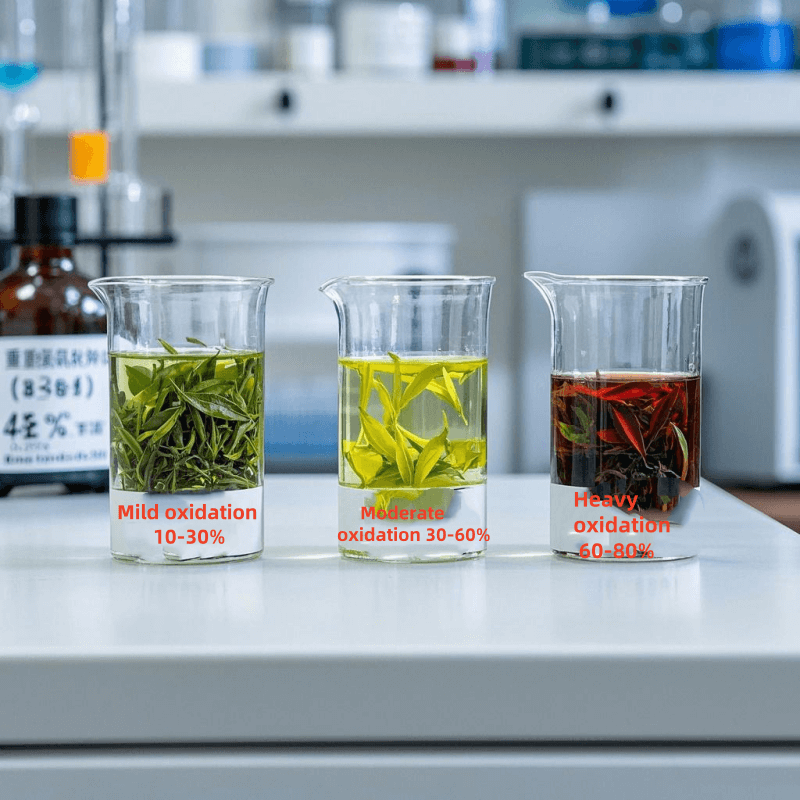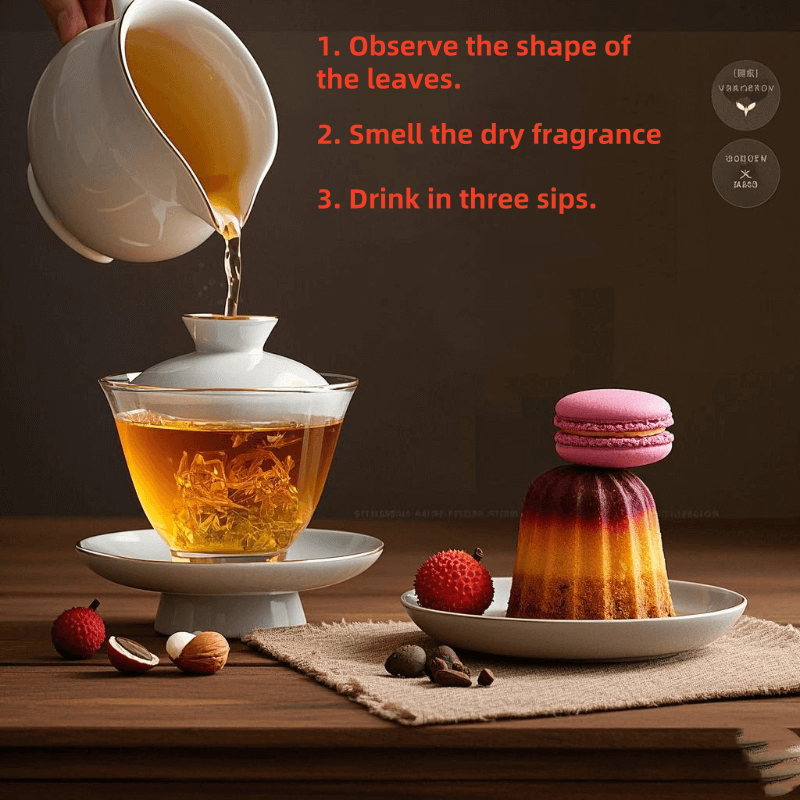In the vast landscape of teas, oolong tea stands apart for its intricate, ever-evolving flavor profile that can dazzle even the most discerning palate. Unlike the straightforwardness of green tea or the boldness of black tea, oolong tea taste is a symphony of aromas and flavors, influenced by factors as diverse as oxidation levels, growing regions, and brewing methods. But what exactly makes this semi-oxidized tea so captivating, and how can you learn to appreciate its nuances fully?
This guide dives into the world of oolong tea taste, exploring its unique characteristics, regional variations, and the art of tasting. Whether you’re a novice sipping your first cup or a seasoned enthusiast, understanding the layers of oolong tea taste will transform your drinking experience. Let’s embark on a journey to decode this tea’s complex allure.
1. Introduction: Why Oolong Tea Taste Deserves Your Attention
Oolong tea taste is often described as a “bridge” between green and black tea, but this metaphor barely scratches the surface. Thanks to its partial oxidation (10–80%), oolong tea can range from delicate and floral to deeply roasted, with each sip revealing new dimensions. Unlike mass-produced teas, premium oolongs are celebrated for terroir-driven flavors—think the buttery sweetness of Taiwanese high mountain oolongs or the smoky minerality of Wuyi rock teas.
Why does this matter? Because oolong tea taste is not just a sensory experience; it’s a reflection of craftsmanship and nature’s diversity. By learning to appreciate its nuances, you’ll gain access to a world of flavors that can enhance moments of relaxation, social gatherings, or even culinary adventures.
2. What Makes the Taste of Oolong Tea So Unique?
The magic of oolong tea taste lies in its production process and chemical composition:
1. Oxidation as a Flavor Architect
Partial oxidation allows enzymes in the leaves to transform polyphenols into complex compounds like theaflavins (responsible for brightness) and thearubigins (depth). This process creates a flavor spectrum unmatched by other teas:
- Unoxidized Green Tea: Grassiness from chlorophyll
- Fully Oxidized Black Tea: Maltiness from complete polyphenol conversion
- Semi-Oxidized Oolong: A balance of both, plus unique intermediates like methylxanthines, which contribute to umami and sweetness.
2. Leaf Structure and Brewing Potential
Oolong leaves are often larger and more intact than black tea, allowing for multiple steeps (5–7 times) that reveal evolving flavors. Each steep releases different compounds:
- First Steep: Bright, floral top notes
- Middle Steeps: Rich, nutty mid-tones
- Later Steeps: Subtle, sweet undertones
3. The Role of Aroma in Taste
Aroma accounts for 80% of taste, and oolong tea excels here. Its dry leaves might smell like orchids, roasted chestnuts, or honey, while the brewed tea releases layered aromas that enhance the drinking experience. As tea sommelier Lisa Tan notes, “With oolong, you taste with your nose first—each aroma note prepares your palate for the flavor journey ahead.”
3. A Breakdown of Oolong Tea Taste by Oxidation Levels

Oxidation is the primary driver of oolong tea taste. Let’s explore how different levels create distinct flavor profiles:
Lightly Oxidized (10–30%): The Delicate Floral Realm
- Example Teas: Tieguanyin (Iron Goddess of Mercy), Alishan High Mountain
- Taste Profile:
- Aroma: Fresh flowers (orchid, jasmine), green apple, citrus zest
- Flavor: Bright and crisp, with notes of pear, honeydew melon, and a grassy finish
- Mouthfeel: Light-bodied, with a clean, refreshing aftertaste
- Best For: Those who prefer green tea’s freshness but want a touch of sweetness.
Medium Oxidized (30–60%): The Balanced Complexity
- Example Teas: Phoenix Dan Cong, Jin Xuan (Milk Oolong)
- Taste Profile:
- Aroma: Ripe stone fruits (peach, apricot), roasted nuts, honey
- Flavor: Smooth and rounded, with layers of caramel, vanilla, and a hint of spice
- Mouthfeel: Silky, with a long, satisfying finish
- Best For: Drinkers seeking a harmonious blend of floral and nutty notes.
Heavily Oxidized (60–80%): The Bold and Roasted Depth
- Example Teas: Da Hong Pao (Big Red Robe), Dongfang Meiren (Oriental Beauty)
- Taste Profile:
- Aroma: Dark chocolate, cinnamon, smoky oak, overripe berries
- Flavor: Rich and robust, with notes of roasted chestnut, molasses, and a slight earthiness
- Mouthfeel: Full-bodied, with a warm, comforting finish
- Best For: Lovers of black tea’s boldness but crave more nuance.
Taste Comparison Table
| Oxidation Level | Dominant Flavor Notes | Ideal Brewing Temp | Steeps |
| Light | Floral, fruity, grassy | 175–185°F (79–85°C) | 5–6 |
| Medium | Nutty, sweet, creamy | 185–195°F (85–90°C) | 6–7 |
| Heavy | Roasted, spicy, earthy | 195–205°F (90–96°C) | 4–5 |
4. Regional Differences That Affect Oolong Tea Flavor
Beyond oxidation, where oolong tea is grown shapes its taste:
Taiwan: The High-Altitude Sweet Spot
- Environment: Misty mountains (Alishan, Lishan) with cool temperatures and acidic soil
- Taste Trait: Light to medium oxidized oolongs with pronounced floral sweetness and a creamy mouthfeel, like the iconic Jin Xuan milk oolong.
- Explore Further: Find your favorite oolong tea taste in our curated product range featuring premium Taiwanese high mountain varieties.
China’s Fujian Province: The Birthplace of Oolong
- Wuyi Mountains (Rock Teas): Heavily oxidized oolongs like Da Hong Pao, featuring smoky, mineral-rich flavors from the region’s red sandstone cliffs.
- Anxi County (Tieguanyin): Lightly oxidized teas with intense orchid aromas and a crisp, lingering sweetness.
Guangdong Province: The Home of Phoenix Dan Cong
- Phoenix Mountains: Medium to heavily oxidized oolongs with over 100 flavor varieties, from “Honey Orchid” to “Almond Fragrance,” each named for their distinct aromas.
Thailand and Vietnam: The New Contenders
- Thai Oolongs: Often lightly oxidized, with tropical fruit notes (mango, lychee) due to warmer climates.
- Vietnamese Oolongs: Robust and earthy, influenced by volcanic soil and higher oxidation levels.
Fun Fact: A 2020 study in Tea Science found that terroir accounts for 30% of oolong tea taste, with altitude and soil minerals having the strongest impact.
5. How to Properly Taste and Evaluate Oolong Tea
Appreciating oolong tea taste is a skill that combines observation, smell, and sip technique:

1. Prepare the Senses
- Visual Inspection: Examine dry leaves for color (green to dark brown) and shape (whole leaves indicate quality).
- Aroma First: Inhale the dry leaf aroma, then the wet leaf after a quick rinse—note any floral, fruity, or roasted notes.
2. The Art of Sipping
- First Sip: Let the tea coat your entire palate—note the initial taste (sweet, bitter, astringent) and where it hits (front, middle, or back of the tongue).
- Retain and Inhale: Hold the tea in your mouth for 2–3 seconds, then exhale through your nose to release trapped aromas (this is called “retronasal olfaction”).
- Notice the Finish: Does the flavor linger? Is the aftertaste sweet, dry, or spicy?
3. Use a Tasting Grid
Rate oolong tea taste on these dimensions:
- Aroma: Floral, herbal, nutty, roasted
- Flavor: Sweetness, bitterness, astringency, umami
- Mouthfeel: Light, medium, full-bodied; smooth, creamy, or dry
- Finish: Length and quality of the aftertaste
Expert Tool: Enhance your tasting experience with authentic oolong teaware designed to concentrate aromas and highlight flavor nuances.
6. Food Pairings That Complement Oolong Tea Taste
Oolong tea taste shines when paired with foods that either contrast or complement its flavors:
Light Oolongs (Tieguanyin, Alishan)
- Pair With: Light pastries (vanilla scones), fresh fruit tarts, or steamed dumplings—their delicate flavors won’t overpower the tea’s floral notes.
- Avoid: Spicy or heavily seasoned dishes, which can clash with the tea’s subtlety.
Medium Oolongs (Phoenix Dan Cong, Milk Oolong)
- Pair With: Nutty desserts (almond cookies), creamy cheeses (brie, camembert), or roasted poultry—the tea’s balanced sweetness cuts through richness.
- Pro Tip: Try with matcha-flavored treats to enhance the umami undertones.
Heavy Oolongs (Da Hong Pao, Dongfang Meiren)
- Pair With: Dark chocolate, spiced nuts, or barbecued meats—the tea’s roasted notes complement smoky flavors, while its tannins balance greasiness.
- Classic Combo: Serve with Peking duck to cleanse the palate between bites.
Scientific Insight: Aroma compounds in oolong like linalool (floral) and geraniol (rose) pair particularly well with foods containing similar esters, creating a harmonious taste experience, according to Flavor Chemistry Research.
7. Conclusion: Embrace the Rich Taste of Oolong Tea
From the delicate floral whispers of a lightly oxidized Tieguanyin to the bold, roasted embrace of Da Hong Pao, oolong tea taste is a testament to nature’s diversity and human craftsmanship. By understanding how oxidation, region, and brewing influence its flavor, you’ll gain the tools to explore its vast spectrum and find your perfect brew.
Ready to embark on your taste adventure? Discover the complex oolong tea taste with our carefully selected leaves, handpicked to showcase the best of Taiwanese and Chinese oolongs. Whether you sip it in a quiet moment or share it with friends, each cup of oolong tea is an invitation to slow down, savor, and appreciate the artistry in every drop.
Remember, the beauty of oolong tea taste is that there’s no right or wrong—only new flavors to explore. So pour a cup, breathe in the aroma, and let your palate guide you.
